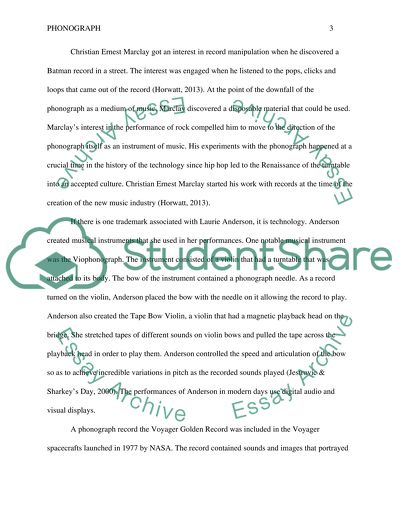Cite this document
(Recording Device Phonograph Case Study Example | Topics and Well Written Essays - 1389 words, n.d.)
Recording Device Phonograph Case Study Example | Topics and Well Written Essays - 1389 words. Retrieved from https://studentshare.org/culture/1693993-how-the-phonograph-transformed-the-arts
Recording Device Phonograph Case Study Example | Topics and Well Written Essays - 1389 words. Retrieved from https://studentshare.org/culture/1693993-how-the-phonograph-transformed-the-arts
(Recording Device Phonograph Case Study Example | Topics and Well Written Essays - 1389 Words)
Recording Device Phonograph Case Study Example | Topics and Well Written Essays - 1389 Words. https://studentshare.org/culture/1693993-how-the-phonograph-transformed-the-arts.
Recording Device Phonograph Case Study Example | Topics and Well Written Essays - 1389 Words. https://studentshare.org/culture/1693993-how-the-phonograph-transformed-the-arts.
“Recording Device Phonograph Case Study Example | Topics and Well Written Essays - 1389 Words”, n.d. https://studentshare.org/culture/1693993-how-the-phonograph-transformed-the-arts.


